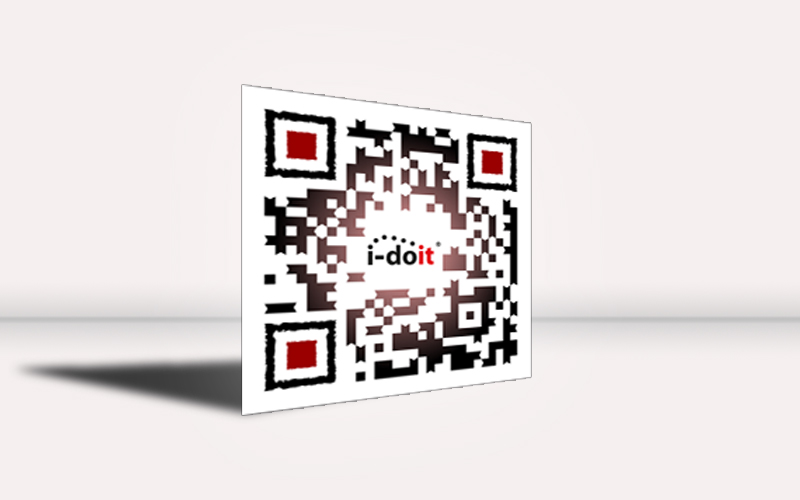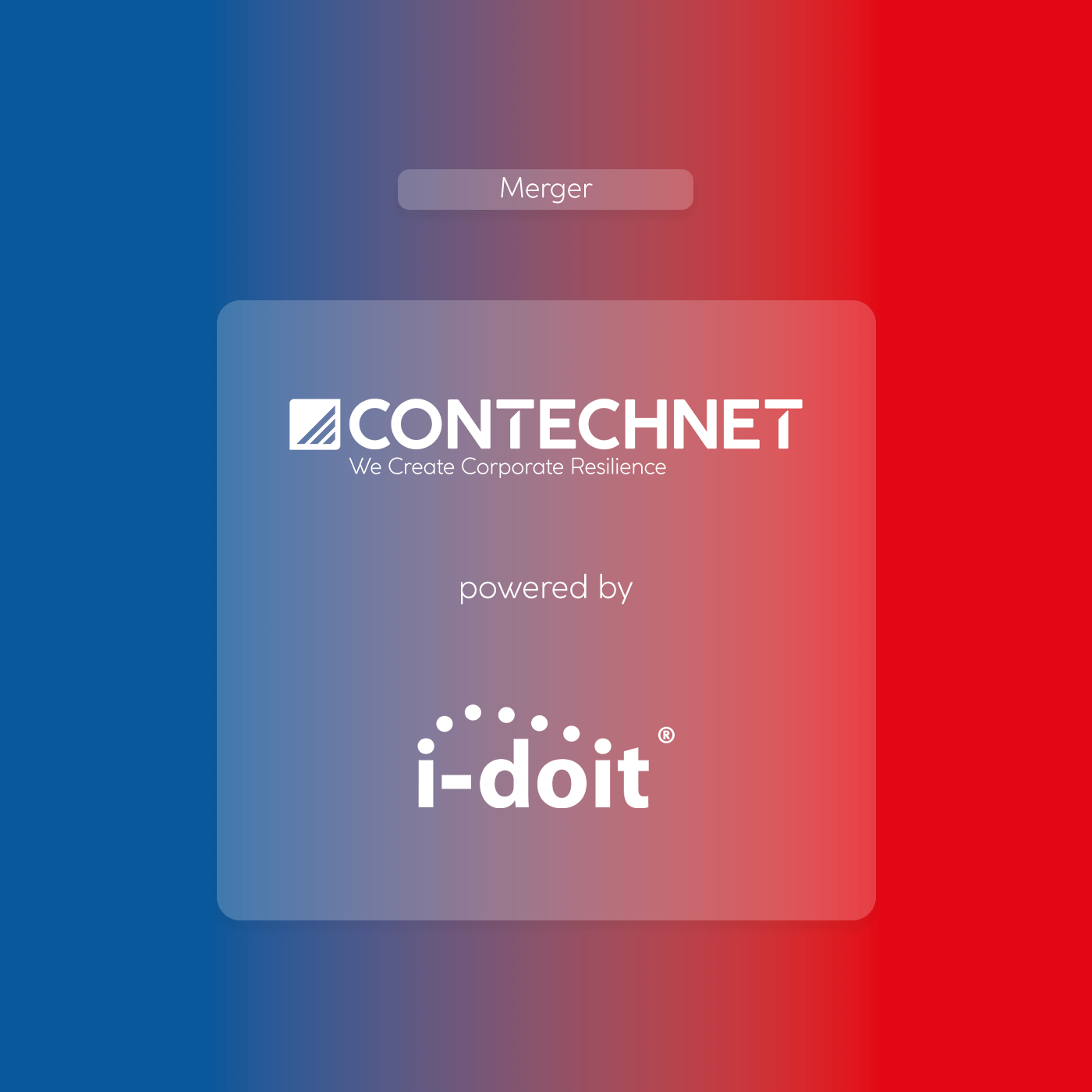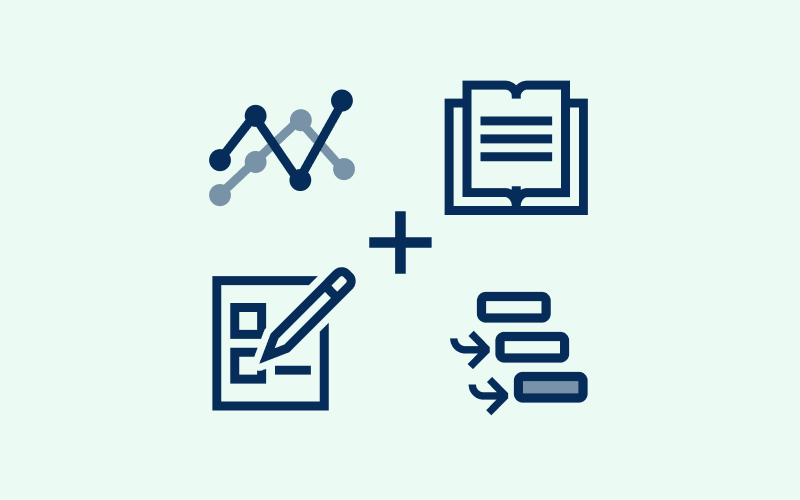Inventory is often considered a necessary evil. Equipment and other inventory must be located first. Afterwards, data is collected for hours with pen and paper. Possibly, the data is transferred to an Excel spreadsheet at the end. The i-doit CMDB automatically creates a QR code for each asset. This is later printed out via a label printer and attached to the device. So nothing gets in the way of the next inventory. Another advantage: you lay the foundation for comprehensive IT lifecycle management.
What is a QR code?
The QR code is a two-dimensional code developed by the Japanese company Denso Wave in 1994. Originally, this format was used in the automotive industry. The automotive supplier Denso marked the components with these codes in order to optimise the logistics processes.
Due to an automatic error correction, this method is very robust and therefore widely used. Compared to the conventional barcode, much more information can be stored in a QR code. The field of application is expanded almost at will. Today, this code format can be found in all conceivable applications. Another advantage is the direct access to the information stored in the code. This is also where the name of the format comes from. “QR” stands for “Quick Response”.
What is a barcode?
A barcode consists of parallel bars and gaps of different widths. This is why it is often called barcode or strip code. The term “code” does not stand for encryption, but for the representation of data in binary symbols. The disadvantage compared to the QR code is proportionally a significantly lower content of information.
Barcodes usually contain sequences of numbers represented as stripes. Thus, the best-known application of barcodes is found in wholesale and retail. There, the article numbers or EANs (European Article Number) are applied as barcodes on the product packaging.

How are barcodes / QR codes created in i-doit?
For each asset created, i-doit automatically creates a QR code. Depending on the settings in the administration area, the QR code automatically contains the selected information.
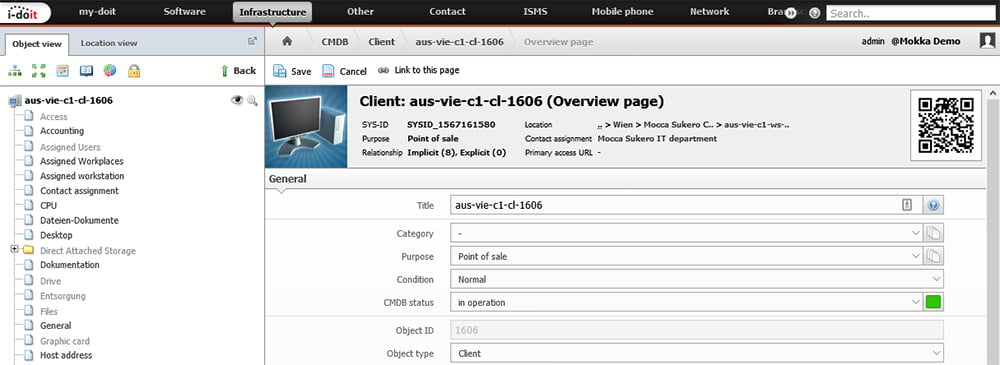
A QR code is automatically generated for each object created in i-doit.
Configuration of the QR codes
QR codes can be used in different ways. Depending on the application, the generated QR code contains different information.
Variant 1: Calling up the object in i-doit.
When scanning the QR code, the object is opened directly in the browser. This allows changes to the asset to be made quickly or information to be made available.
Variant 2: Transfer of information
Instead of integrating a simple link to the asset, various information from the asset can also be used. This includes serial numbers, model, manufacturer, names/hostnames and IP addresses.
Label design
You have the option of additionally supplementing the printable labels with device information. Various placeholders are available for this purpose. Example: By using %sysid%, the SYS ID of the asset is automatically used on the label.

By using the placeholders, additional information is printed on the label.
The placeholders can be inserted easily into the text template and customised.
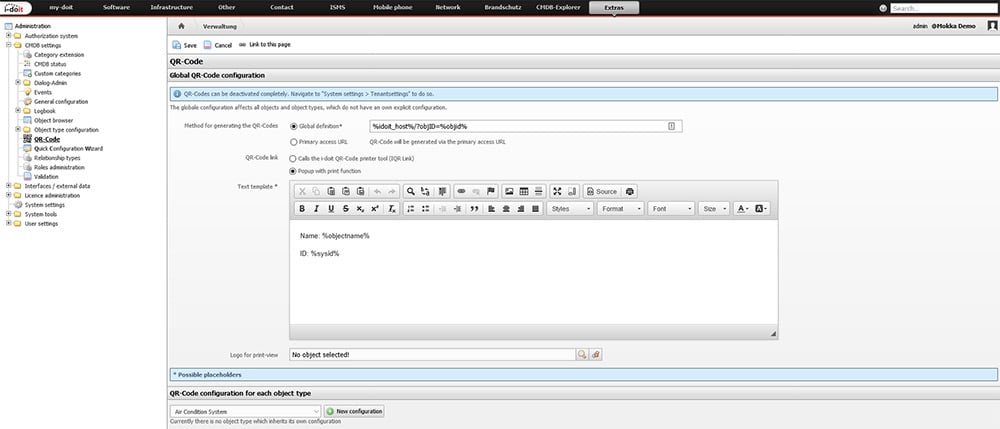
The QR Printer Tool
A convenient way to print labels is via the i-doit QR Code Printer tool. The advantage: Information is retrieved directly via the Object ID. The connection between the printer tool and i-doit is established via the free i-doit pro add-on API.
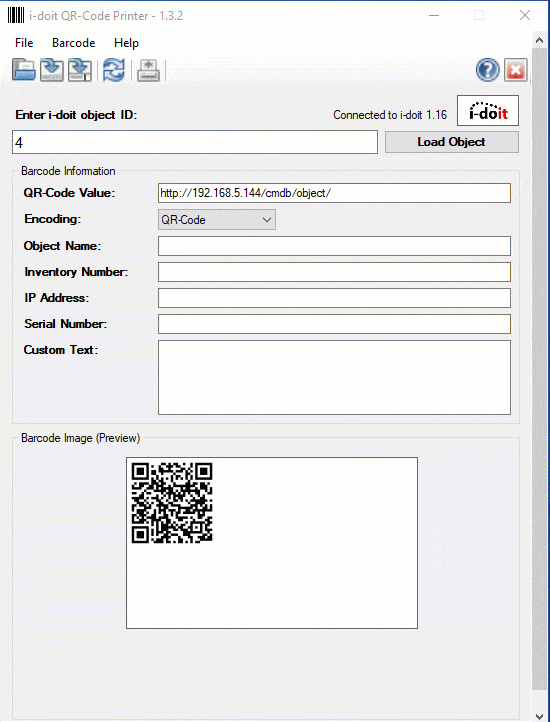
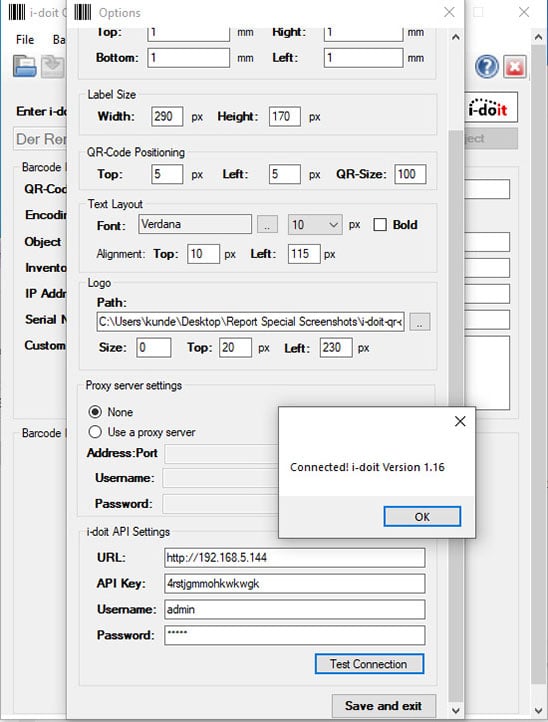
In addition to retrieving the information, it is also possible to design the labels with the QR printer tool. The spacing, alignment and size of the label are freely selectable. If desired, it is possible to include a logo. In addition, the position of the QR code is configurable. The use of a proxy server is also possible.
The connection to i-doit and the layout of the labels are configured in the settings of the QR Printer tool.
Acquisition of inventory data
The category “Accounting” can be activated for all object types in i-doit. In addition to the inventory number, all accounting information such as order number, delivery number and invoice number can be entered in this category. In addition, the cost centre used and the object’s cost can be entered. Warranty periods are calculated automatically from the available information.
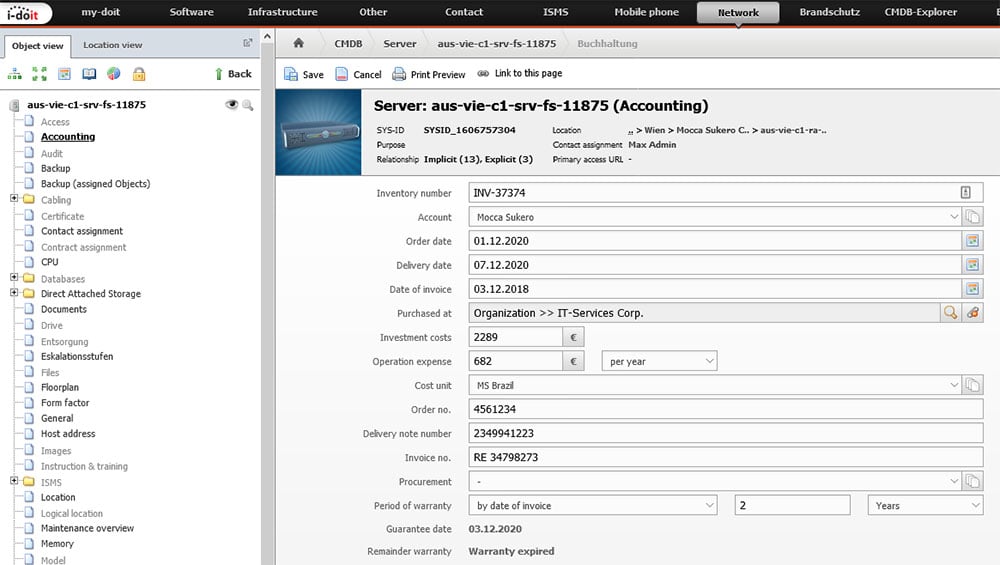
Reports for inventory
With i-doit Report Manager, you have an integrated tool that lets you capture all the information in individual reports. This allows you to filter all assets by any information, such as location, user, type, inventory number and much more.
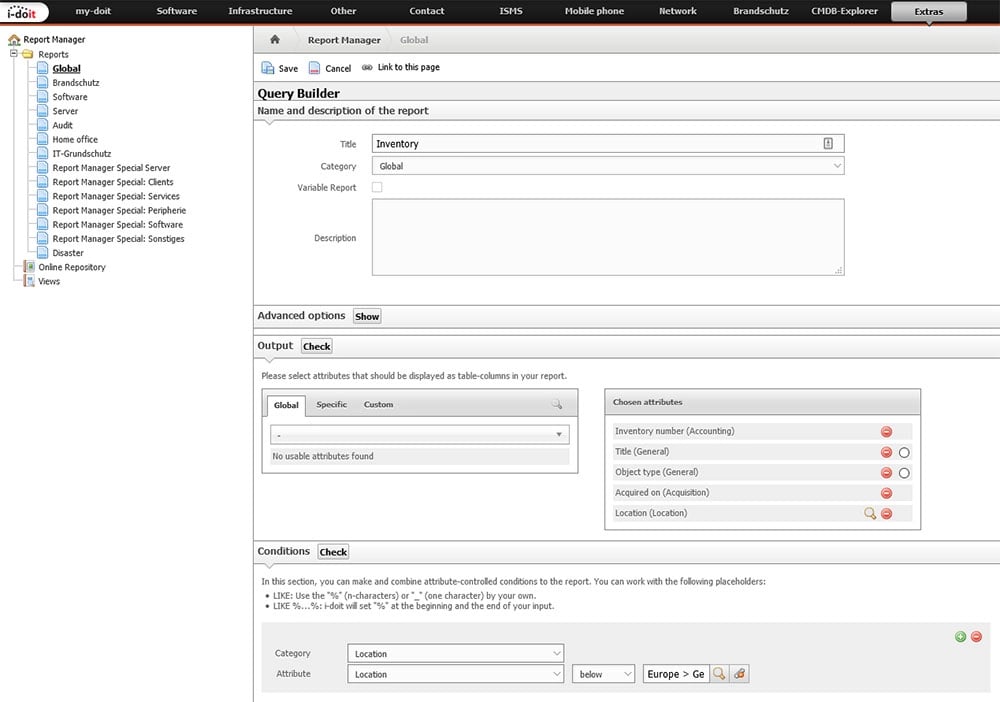
In our example report we have compiled all clients with a location in Germany, including inventory number, designation, date of entry, object type and location.

Can barcodes also be used instead of QR codes?
To switch from QR codes to barcodes, you can find the corresponding settings under Administration > System settings > Client settings > QR code.

Alternatively, the following entries can also be added under System settings -> Expert settings.

